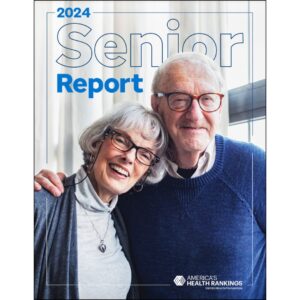The Role of In-Person Contact in Supporting Older Adults Through Loneliness
The pandemic and the resulting social isolation highlighted just how important in-person interaction is for emotional well-being, particularly in long-term care settings. Many residents experienced significant emotional challenges, with depression and mental health issues becoming prevalent concerns.
While virtual tools like phone and Zoom calls provided some connection during lockdown, a recent study reveals that they aren’t nearly as effective as in-person contact. Insights from this research can help senior care providers better address loneliness and depression among residents.
Study Finds In-Person Contact Is Essential
A study titled “Loneliness and Mode of Social Contact in Late Life” examines the importance of in-person contact in lowering loneliness levels in older adults. The study assessed the social encounters and loneliness of 313 community-dwelling older adults between 2016 and 2017.
The results revealed that participants who had in-person contact with others experienced lower levels of loneliness three hours later. Residents who had phone or digital contact with others didn’t experience the same reduction in loneliness.
Participants who felt lonelier in the three hours before an assessment also reported that they had more phone contact. Residents feeling lonely did not report more in-person or digital contact, which suggests that the participants might be using the phone as a substitute when in-person contact isn’t available. Additionally, some older adults aren’t comfortable using digital media.
The study also found that when participants felt lonely, they were less likely to reach out to close connections, such as close friends and family. However, in-person contact, even with someone without a strong relationship connection, like an acquaintance, still correlated with lower levels of loneliness compared to the results from a phone call with a family member or friend.
The Correlation Between Loneliness and Depression

Dr. Colleen Hanlon, PhD, vice president of medical affairs at BrainsWay
Feelings of loneliness, especially when experienced over an extended period of time, can increase the likelihood of developing depression, a risk that is particularly pronounced among older adults. While loneliness involves feeling isolated, even when around others, depression is a medical condition that impacts mood, energy, and daily life. “Loneliness can increase the risk of depression by causing feelings of sadness or emptiness, while depression often brings deeper symptoms like hopelessness, fatigue, and a lack of interest in activities,” says Dr. Colleen Hanlon, PhD, vice president of medical affairs at BrainsWay. “Though loneliness doesn’t always lead to depression, it’s a significant risk, especially as we age and face more social changes.”
Loneliness can signal that an older adult is at an increased risk of developing depression. When someone is lonely, it’s important to monitor them for any signs of depression that may emerge as a result. “While not everyone who feels lonely becomes depressed, loneliness is a significant risk factor, especially as older adults face life changes like health issues or loss of loved ones,” Hanlon explains.
Hanlon encourages senior care providers to watch residents for changes in behavior, such as withdrawing from activities, as well as changes in eating or sleeping patterns, or becoming more irritable. These changes may signify early signs of depression. If a community notices any of these symptoms, they should work with a health professional to get the resident the support they need.
How to Use In-Person Contact to Support Residents
Social isolation can significantly impact mental health, and it often leads to or worsens depression. “Research shows that people who are socially connected tend to live longer and have better overall health,” says Hanlon. “Social interaction helps individuals feel valued, supported, and engaged. They also can trigger the production of dopamine, oxytocin, endorphins, and other biochemicals that give us a sense of well-being.”
Residents with depression may be hesitant to seek help because of the stigma surrounding mental health. Hanlon suggests that senior care communities bring in mental health specialists, who can lead open conversations and provide education on depression to create a culture of open dialogue. “Offering residents an easy and private way to approach the care team with concerns increases the likelihood of patients receiving timely support from a clinician,” she explains.
This approach also gives mental health specialists the opportunity to introduce advanced treatment options. “For example, Deep Transcranial Magnetic Stimulation (Deep TMS™) is a noninvasive treatment cleared by the FDA and recently granted an expanded indication allowing for the treatment of patients with depression disorder from ages 22 to 86, changing the previous upper age limit of 68,” says Hanlon. Residents may benefit from psychotherapy and medication on their own or paired with Deep TMS.
Senior care communities should also work on creating a supportive and engaging atmosphere to address each resident’s emotional and social needs. Hanlon recommends communities provide ongoing staff training on how to recognize signs of depression and offer effective support. Senior care communities should also create personalized plans that address each resident’s individual emotional needs, social engagement, and mental health support. It’s also important to regularly review and monitor the effectiveness of medications prescribed for depression. A health professional should manage any medication side effects.
Support groups and engaging activities that align with residents’ interests may help reduce loneliness and boost their mood. It’s also essential to cultivate social interaction within the community to create valuable in-person contact opportunities. “Some great things we have seen in action include creating resident-led initiatives and activities, including crafts, low-impact exercise classes that make movement fun, and planned outings and day trips,” Hanlon says. “You may consider inviting local church or community choir and music groups to perform for the residents. There are many ways to foster a sense of belonging and community, it just takes a little creativity.”
The Importance of Identifying Depression in Residents
While fostering in-person contact can help reduce feelings of loneliness in residents, it’s equally important for a senior care community to be able to identify symptoms of depression and ensure that residents receive the mental health support they need. “Many people mistake changes in memory, cognition, and mood as the beginning of Alzheimer’s dementia,” Hanlon explains, “but thankfully, in many older adults, these symptoms may indicate the onset of depression, which has evidence-based treatments – some of which do not involve pharmaceuticals.” By providing comprehensive support, including access to a mental health professional, senior care communities can help treat resident depression effectively and improve the overall quality of life for residents.

Paige Cerulli is a contributing writer to i Advance Senior Care.
Related Articles
Topics: Facility management , Featured Articles , Operations , Risk Management











